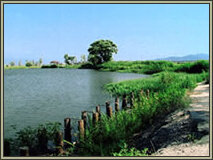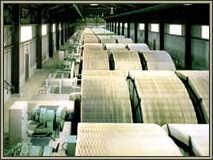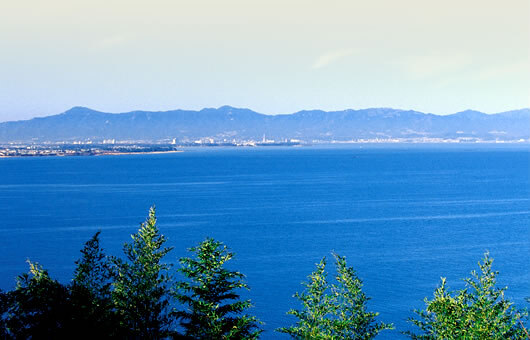

Toyotomi Hideyoshi (1537-1598) first ruled his territory on the side of Lake Biwa with Nagahama Castle. Oda Nobunaga (1534-1582) also constructed a gigantic castle tower on Mount Azuchi looking over Lake Biwa and proceeded to unite the country under his rulership.
It is no exaggeration to say that the early modern period of Japan’s history just opened its curtains precisely in this area, near Lake Biwa.
“Early modern” times must also indicate even that of land-use at the same time. In other words, the dawn of this period matched the beginning of an age when communities, which so far had been formed as if subsistence of the people was subject to the existing natural terrain, acquired means and ways to improve the conditions of these terrain for the first time so as to satisfy their own needs of society with the power of civil engineering.
Of course, this was done in order to acquire the wealth of agriculture.
Roughly speaking , the modern age might also be described as an age when people began to alter natural terrain to acquire the wealth of industry as well. In this case, changing the terrain would be synonymous with changing the water flow.
It cannot be a simple coincidence that all of genius warlords chose their residences in this particular location at the dawn of the early modern period.
Those who control water surely control the whole country. After ages, many historians pointed out that flood control can be regarded as a distinguished feature of this warring states period. However, flood control and water-use are two sides of the same coin. In other words, those who benefit water will benefit the whole country.
While money is merely an economic means facilitating the exchange of goods, water is a marvelous social resource. Throughout history, the flow of water has changed wealth, and then the flow of wealth has changed society.
This huge natural freshwater tank continues to be an unalterable national asset, no matter how much the times may change.

Drained agricultural water is stored in the satellite lakes of Lake Biwa, naturally purified by reeds and other flora, and reused as irrigation water
The world’s first agricultural water purification facility located in the Shin-An Land Improvement District.
The Yodo River basin has truly many “firsts”: the first hydroelectric power plant, the first national river improvement project, the first national land reclamation project, the first large-scale irrigation project…and the first large-scale pump irrigation project. And now, this lake country, Shiga Prefecture, is implementing a variety of environmental protection measures in advance of the rest of Japan. The area has always been at the nation’s forefront in exploring relationships between rivers and human society.
This short 75-km span of river has had such a varied and extremely heavy history.
We have barely written the shallow part but already we’re at the final chapter.
Lastly, let us additionally write with the maximum sincerity:
There is no doubt that the flow of rivers historically changes the flow of societies. But is that still true today?
It is clear to everyone that we no longer live in an age when conflicts arise over river flows.
Our times will probably be referred to by later historians as a turning point, much as the warring states period was. Today we mark a shift from the century of fire (oil) and machinery to the one of water and life.
The “Lake of Dynasties” is a legacy we should all be proud of. We hope that the shift to the age of water and life will take place during our generation.

